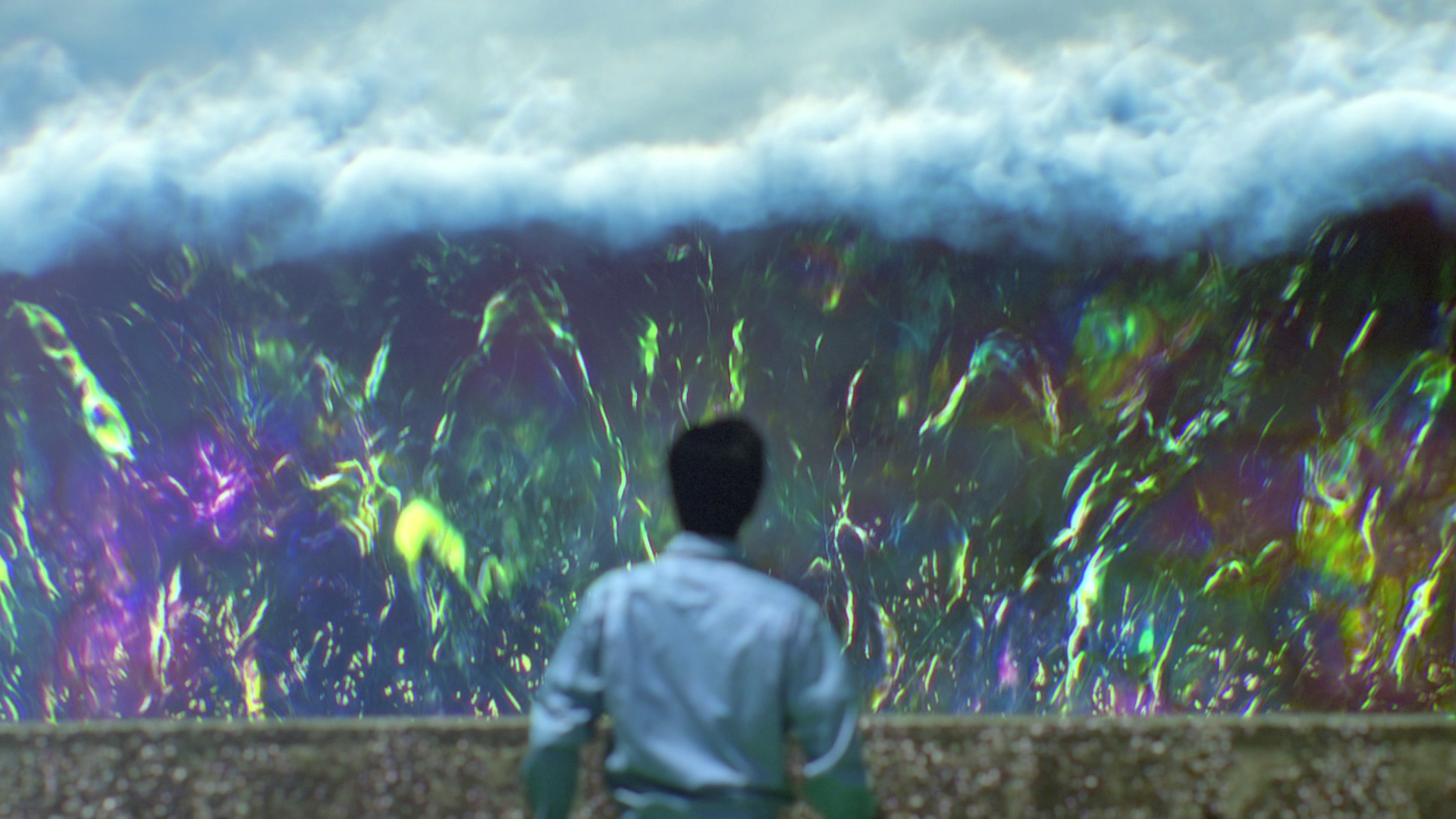by Jason Suzuki
Thanks to Hulu we know a bit more about what sort of stuff Criterion/Janus Films have the rights to but have not yet released. As far as Japanese cinema there is quite a bit on there, and they can't even dump these titles to the Eclipse line quick enough. Entire (or at least close to) filmographies of filmmakers like Kinoshita, Naruse, and Oshima, and other classics like Cure and Castle of Sand can be found on Hulu, waiting for proper HD releases with special features and everything. So then when something like Jellyfish Eyes is announced, artist Takashi Murakami's foray into feature filmmaking, it's hard not to go into the film with some bad vibes.
The film starts off on familiar territory with the relocation of the main character. Masashi and his mother are driving to their new home. Without friends, and as we find out in recurring dreams recently without a father, Masashi is a prime candidate for a grand adventure. All that's missing is a cute creature friend. Luckily at the local lab where Masashi's uncle works there is a project being run by four black-cloaked individuals (one of them an underused Shota Sometani). Using what seems to be negative energy from children, they are able to manifest various creatures which they hand out to the children along with cellular devices which are essentially thin Pokeballs with a touch screen.
Beyond the fact that there are many different types of strange creatures, the film is very reminiscent of something like Pokemon. The main character and his bond to his creature is signified as unique since Kuragebo needs no device to be linked with Masashi. The antagonists are a mysteriously tiny organization whose views, while still being villainous, are meant to express some sort of modern concern. The film is a collection of familiar beats and the FRIENDS designs can only hold your interest for so long. Everything culminates in the creation of a large-scale creature that requires the use of everyone working together in order to destroy. The film feels rushed.
Murakami has worked in the film medium before doing an animated short for Louis Vuitton in collaboration with Mamoru Hosoda. It's one thing to evoke narrative and meaning from design and a collections of still images, but when he strives to pursue a conventional narrative he struggles. Relying on these beats, the main appeal to this film is the pastiche of genres and curiosity of where it will go next in terms of FRIENDS or appearance of an uncle clone who must duke it out with the real guy. Miike's Yakuza Apocalypse I felt had a similar appeal but was a lot more inventive than this, and even then that movie was a glorified greatest hits for Miike.
What comes out the most in the special features is how much Yoshihiro Nishimura contributed to the film and how important he was to the inception and completion of Murakami's film. Not only producing the project and co-writing the screenplay, Nishimura also edited the film and was assistant director to Murakami. Based on some of the behind the scenes footage though, where Murakami is charmingly open with the crew about how new to the medium of film he is, it wouldn't be far-fetched to say Nishimura was borderline co-director yet maintained his producer's intent of helping Murakami realize his vision. Because of Nishimura's major involvement that means we can say that the people who brought us films like Mutant Girls Squad and Zombie Ass are finally in the collection! Names like writer Jun Tsugita and cinematographer Yasutaka Nagano share strikingly similar filmographies. This is proof that sometimes a name helps recognition even if the final work is on the same level as some of these "Sushi Typhoon" films as they were branded by Nikkatsu's short lived venture.
There's over an hour's worth of behind the scenes material broken up into three separate features. There is a one-on-one interview with Murakami talking about his influences and background and how this informed Jellyfish Eyes. Takashi Murakami: The Art of Film is a documentary on the making of the film which is where you get to hear more from Nishimura and other Murakami collaborators. And finally there is Making F.R.I.E.N.D.s which is twenty minutes on the creation process of the creatures seen in the film more interesting for the physical details of the character creation rather than any info on thematic reasoning for their designs.
And to make what's already proven to be a divisive release even more so, the trailer for the sequel is included on the disc. It looks like everyone is returning and we'll see Uncle Naoto in a more active role as well as the return of the black cloaked four (including Sometani). Unfortunately it looks like the stakes (and budget) are raised but not much else.
Overall the film is fine. I think the label that's putting it out, and all the expectations that come from that wacky C, will make the faults with this clunky debut stand out even more. Criterion seems to be trying to get another Hausu on their hands in the "wacky Japan" market. But while Obayashi's film was constantly visually impressive and imaginative in ways beyond screen content (Obayashi plays with film form while Murakami is still trying to figure it out), the political aspects of Hausu don't seem forced but properly integrated and not beating you over the head. Murakami's film is just a big ball of well-intentioned nothing. Curiously enough, it's comments like the one below that leave a cynical taste in your mouth when it comes to Western consumption of "weird" and "cool" Japan. This pop-culture orientalism stems from a finger pointing view of the brightly colored escapades, but what do we have when it's planned from its origin point?
Jason Suzuki is co-editor to Cinema Adrift.

